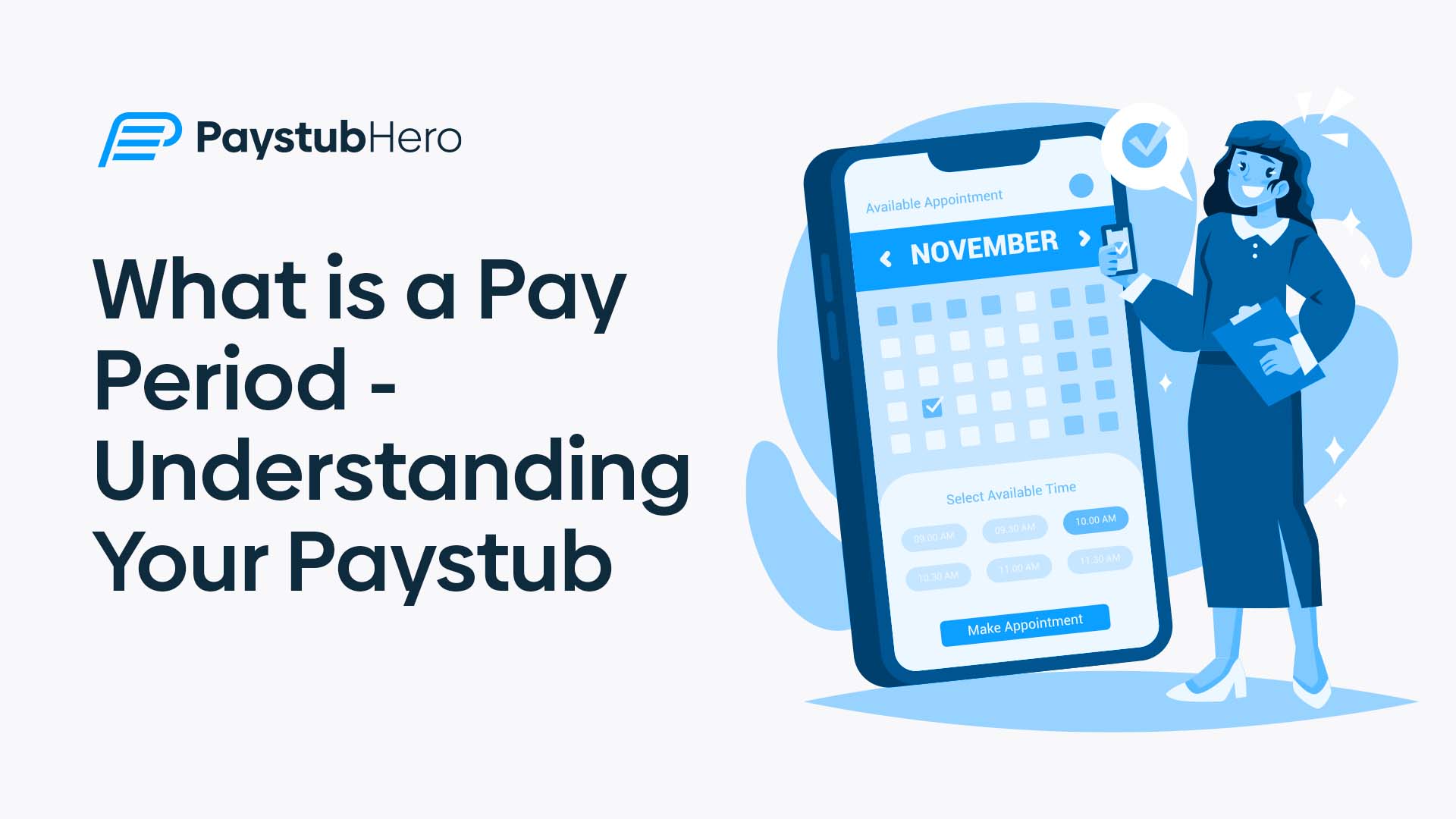A pay period is the regular schedule that determines when and how often you receive your paycheck.
Whether you get paid weekly, every two weeks, or once a month, the pay period shows which days you worked that your paycheck covers.
Not sure how it all works or why it matters for payday? Let’s break it down.
Why Pay Periods Exist
Let’s say you work a shift from Monday to Friday. That block of time? That’s your workweek. But your employer needs a system to calculate when to pay you for it. That’s where pay periods come in.
They make it easy to keep track of hours worked, calculate taxes, handle benefits, and cut paychecks on a schedule. It’s payroll made simple.
Types of Pay Periods
Now here’s where things get interesting. Not all pay periods are the same. Let’s talk about the four common ones.
1. Weekly Pay
You get paid every week, usually on the same day (like every Friday). That’s 52 paychecks a year.
It’s great for cash flow because you see your money fast. But it’s more work for payroll teams.
2. Biweekly Pay
This one’s popular. You get paid every two weeks, which gives you 26 paychecks a year.
You might love the months where you get three paychecks instead of two. That “extra” check feels like a bonus.
3. Semi-Monthly Pay
You’re paid twice a month on fixed dates, like the 15th and 30th. That’s 24 paychecks a year.
The timing is predictable, but it doesn’t always line up with workweeks, which can make hourly pay tricky.
4. Monthly Pay
You get one paycheck a month. That’s 12 a year.
It’s less common and can feel like a long wait between paydays. But some salaried roles and contractors use this setup.
How Pay Periods Affect Your Paycheck
Your pay period decides two big things:
➼ How often you get paid
➼ How much your paycheck is
Let’s say you earn $52,000 a year. On a biweekly schedule, that’s about $2,000 every two weeks before taxes. On a semi-monthly schedule? It’s closer to $2,166.67.
See how that works? Same salary, different paycheck sizes depending on the pay period.
Reading Your Paystub: What to Look For
Okay, you’ve got your paycheck. Now what?
Your paystub shows you how your pay was calculated. Here’s what to focus on:
⦿ Pay Period Dates
Start here. These dates show which days you’re being paid for. If you worked from the 1st to the 15th, those dates should be listed. If they’re not, or they don’t match your hours, something’s up.
It’s worth asking about.
⦿ Gross Pay
Next, check your gross pay. This is your full earnings before anything gets taken out. If you’re paid hourly, it should match the number of hours you worked times your rate.
Got any overtime or bonuses? Those should show up here too. This is the “big” number your deductions will come out of.
⦿ Deductions
Now we see what’s taken out.
Taxes, insurance, retirement contributions, it all adds up fast. This section shows where your money is going before it reaches your account. Review it every time.
If a new deduction pops up or one looks too high, speak up. These are your earnings, you deserve to understand them.
⦿ Net Pay
Finally, this is the number that really matters. It’s what actually hits your bank account.
Net pay is what’s left after deductions. It’s your “take-home” pay. If it feels lower than expected, compare it with your last stub. Little changes can slip in. And catching them early saves you time, money, and headaches later.
Get in the habit of checking your hours, your pay rate, and any overtime.
Biweekly vs. Semi-Monthly: What’s the Difference?
These two get mixed up a lot. Here’s the easiest way to remember it:
➼ Biweekly = every 2 weeks (26 checks)
➼ Semi-monthly = twice a month (24 checks)
Biweekly is based on weeks. Semi-monthly is based on dates.
With biweekly, your paycheck always covers 14 days. With semi-monthly, some pay periods may be 13 days, others 15. That can affect overtime and budgeting.
How Many Paychecks Will You Get in a Year?
Here’s the breakdown:
➼ Weekly: 52 paychecks
➼ Biweekly: 26 paychecks
➼ Semi-monthly: 24 paychecks
➼ Monthly: 12 paychecks
If you’re hourly, this matters even more. Know your pay schedule, and you can plan ahead.
How Pay Periods Help With Taxes and Deductions
Pay periods also decide how often money comes out of your check.
Let’s say your health insurance costs $100 a month. If you’re paid biweekly, about $46 gets taken out of each paycheck. If you’re paid monthly, the full $100 comes out at once.
Same with taxes. The more often you get paid, the smaller the bite per check, but it all adds up the same over the year.
Common Pay Period Mistakes to Avoid
Paychecks come in, you glance at the number, and that’s it right? But here’s the thing, if you’re not looking a little closer, you might miss something that messes with your money.
Let’s go over a few mistakes you’ll want to dodge.
Thinking Every Paycheck Is the Same
This one catches a lot of people.
One pay period you might have pulled extra hours or picked up a holiday shift. Next one? Maybe you took a day off without pay. If you assume the amount on your check should always match the last one, you’ll be confused when it doesn’t.
It changes more than you think.
Not Double-Checking Your Hours
If you’re hourly, this one matters, big time.
Always check that your hours match what you actually worked. A missing clock-in, a system error, or even a skipped lunch break can throw things off.
It’s your money, you’ve gotta be your own backup.
Mixing Up Pay Date and Pay Period
This one’s sneaky.
Your paycheck might hit your account on the 15th, but that doesn’t mean it covers the first half of the month. It could be for time worked weeks earlier. So when something looks off, look at the pay period dates.
That’s what tells you what you’re being paid for.
How to Keep Track of Your Pay Periods
You don’t need software. Just keep a note on your phone or a calendar reminder. Know:
➼ When each pay period starts and ends
➼ What day you get paid
That way you always know what to expect.
Need Help With Paystubs? Try PaystubHero
If you’re self-employed, a contractor, or running a small team, pay periods still apply to you. And tracking income? It gets tricky.
That’s where PaystubHero helps. We let you generate legit paystubs in minutes. You just plug in your info, and boom, you’ve got a professional stub that shows your income clearly.
Great if you’re applying for a loan, showing proof of income, or just keeping your records clean.
FAQs
Here are some common questions on pay periods.
It’s the day you get your paycheck, not the days you worked.
Look at your pay schedule (weekly, biweekly, etc.) and count the days from the last period's end to the next.
Weekly: 4-5, Biweekly: 2-3, Semi-monthly: 2, Monthly: 1.




